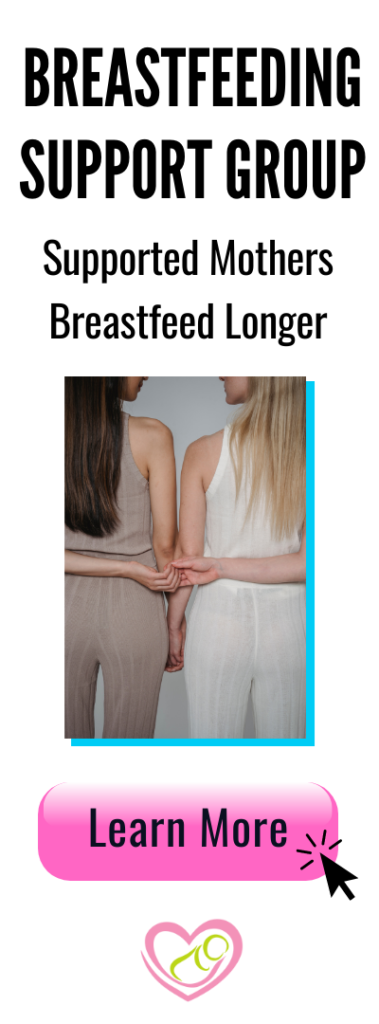Five Tips For Successful Breastfeeding After A Cesarean Birth
December 16, 2021 2024-06-20 16:48Five Tips For Successful Breastfeeding After A Cesarean Birth
Five Tips For Successful Breastfeeding After A Cesarean Birth

Planning a cesarean birth (c-section)? Wanting to prepare for the possibility of the unexpected? While delivering a baby surgically can affect the initiation of breastfeeding, research shows that, in most cases, babies born by cesarean can breastfeed just as successfully as those born vaginally.
As with most things, commitment and finding the right support are everything.
Finding the necessary support is more likely if the conversation is started early. Here are 5 tips to help get your breastfeeding journey off to a good start after a c-section:
1) Talk with your physician ahead of time
Regardless of your birth plan, it’s a good idea to have the conversation about the possibility of a cesarean birth. Request breastfeeding compatible pain medications and anesthesia, and try to use the medications only as needed to keep you comfortable, to reduce sleepiness in both you and your baby. You can also request that your hospital gown and monitoring equipment be arranged in such a way to allow your baby to be placed on your bare chest immediately after birth. Immediate skin-to-skin contact is important for breastfeeding initiation.
2) Arrange for a lactation consultant visit
If your c-section is planned, seeing a lactation consultant prenatally can help you prepare and to know what to expect. After delivery, your lactation consultant can help you position your baby as painlessly as possible for skin to skin and nursing, and show you how to pump effectively (if necessary). Once you’re home, she can help monitor the situation, adjust your positioning as you heal and your mature milk comes in. If supplementation is deemed medically necessary, your LC will help you facilitate that while protecting the breastfeeding relationship.
3) Nurse immediately and often after birth (if possible)
It has been shown that bringing baby to the breast within the first hour of life results in easier breastfeeding and less engorgement. Holding your newborn skin-to-skin is often all that is needed, and your partner or nurse can help hold baby on your chest. If you are feeling too ill or if direct feeding is not possible in the first hour, hand expression or pumping is recommended as soon as possible. Newborns have tiny stomachs, and need to feed often. In the early weeks, 8-12 feeds per day is normal, with no more than a 4 hour stretch during the night. In order to signal your body to produce an adequate milk supply, lean on your support system to help bring baby to the breast/pump as often as possible, and try to resist supplementation if there is not a medical indication.
4) Avoid artificial nipples
Try to discourage hospital staff from bottle feeding or offering a pacifier. Artificial nipples can interfere with breastfeeding in the early weeks; bottles flow differently than the breast, and pacifiers mask hunger cues.
If supplementation is necessary, an alternative method such as syringe or cup feeding is preferred. (Yes, newborns can cup feed effectively!) Your newborn’s stomach size is very small, only the size of a shooter marble on day 1, and increasing to the size of a ping pong ball on day 3, so small quantities of colostrum constitute a full feeding and can easily be fed in a syringe or medicine cup. Even at day 10 your baby’s stomach is only the size of a chicken egg. A little goes a long way!
5) Remember that your milk may take longer to “come in”
Try not to worry! Cesarean births typically result in a slightly delayed transition from the initial nutrient packed colostrum to the higher volume “mature” milk. However, babies who remain close to their mothers, are breastfed on demand, and are monitored by a lactation consultant typically get all they need without supplementation. Many mothers feel like they don’t have enough milk and reach for the formula before it’s necessary, which is why a lactation consultant who will work with your physician is critical to your breastfeeding efforts. Check out these tips: How To Know Your Breastfed Baby Is Getting Enough To Eat
***The information provided on our website is intended solely for general educational and informational purposes only. It is neither intended nor implied to be a substitute for professional medical advice. Always seek the advice of your physician for any questions you may have regarding your or your child’s medical condition. Never disregard professional medical advice or delay in seeking it because of something you have received in this information.***
Search
You may also like
- Avoiding Breastfeeding Pitfalls- Tips That Make A Difference
- Is Cluster Feeding Normal? Tips, Advice, And How To Manage
- 5 Basics Of Successful Breast Milk Removal When Pumping
- Tips For Getting The Best Breastfeeding Latch And Positioning
- Exercise And Breastfeeding- Tips & Advice
- Traveling With A Baby- Tips & Advice



